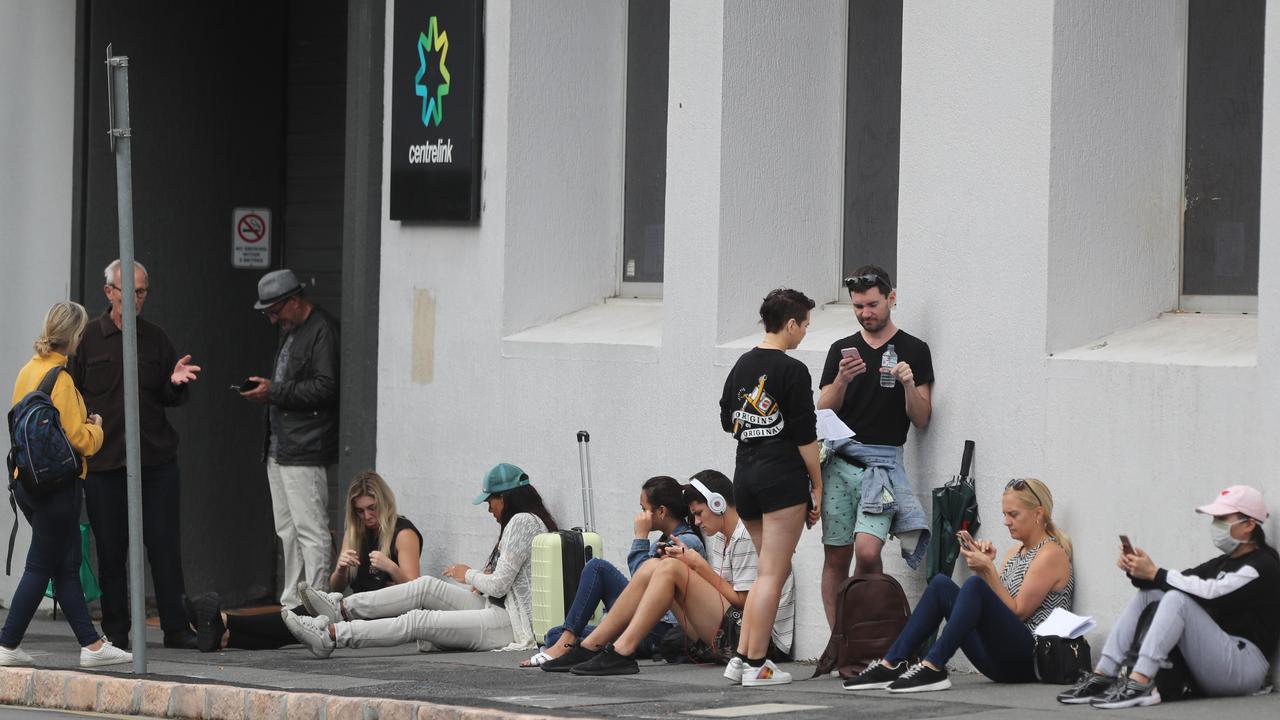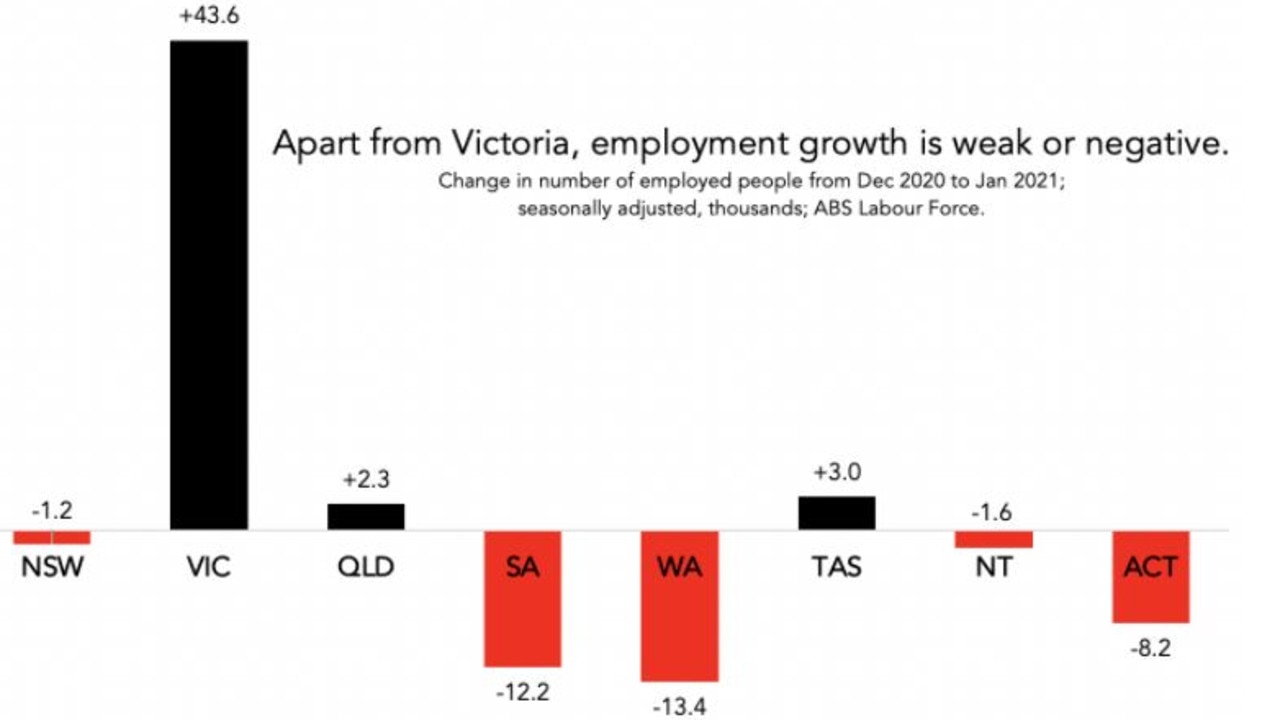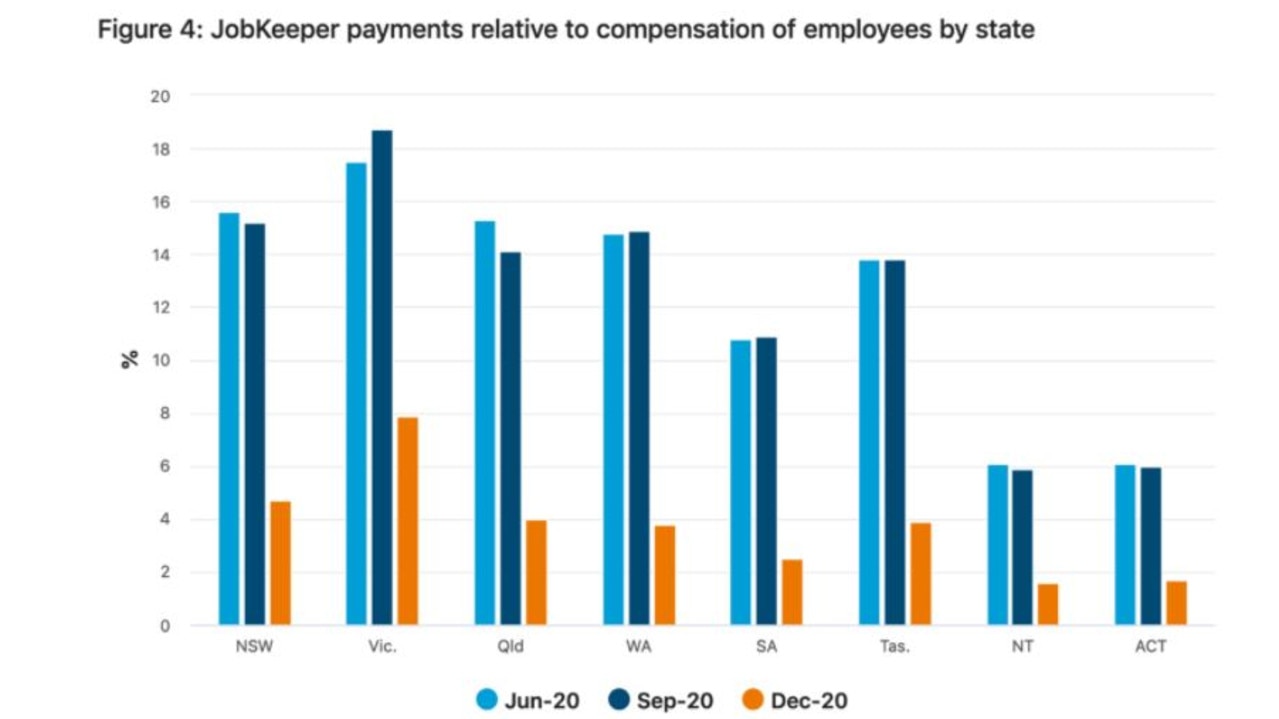What the end of JobKeeper means for Aussie states
In three weeks, the true state of our economy will be revealed. And some postcodes could be facing an ugly future when the government turns off the tap.

The clock is ticking to the day JobKeeper goes away. The sorry truth will be revealed about the true state of the Australian economy on Sunday, March 28, which is in three weeks time.
It’s going to be like when the lights come on at a nightclub at 3am. What looked exciting a few minutes ago could be revealed to be wobbly, dishevelled and suddenly not that hot.
JobKeeper is money the government pays to businesses, who must use it to fund wages of their staff. It has been very useful during the pandemic for keeping people in jobs. JobKeeper is the big reason unemployment didn’t rise above 10 per cent.
But without it, where will we be? JobKeeper is going away at a time when consumer spending hasn’t fully normalised and international travel is not back. We can’t expect every cafe, every bar, every live music venue and every tourist attraction to suddenly stand on their own two feet. Some will be forced to cut staff that they would have cut ages ago if it wasn’t for JobKeeper.
In fact, JobKeeper has probably meant lots of companies kept staff on that would, in a normal year, have been let go. So yes, there’s likely to be job losses from businesses who are still down in the dumps, but also from businesses that are going okay, but have been hanging onto staff they don’t really need, just because the government was paying their wages.
RELATED: ‘Cruel joke’: Jobseeker payment drama

The RBA acknowledges there will be job losses after the end of March. How many? Australia’s top labour market economist has some ideas. Professor Jeff Borland of the University of Melbourne crunched the numbers and reckons job losses will be between 150,000 and 250,000 people. That’s a lot. If they all go onto the unemployed list, the unemployment rate could rise from its current level of 6.4 per cent to more than 8 per cent. A huge backwards step
That’s just one forecast though. Economists’ forecasts can be wrong.
Could it turn out to be another big nothing burger? After all, we’ve already seen JobKeeper phase out from a high level to a low level. The amount being paid to businesses fell, but it didn’t cause unemployment to rise. IN fact, the unemployment rate has kept falling.
There’s two reasons to be worried. One: recent reductions in unemployment could be a bit of a mirage, because have mostly been in Victoria. The formerly plague-ridden state has been playing catch-up.
This next graph shows that Victoria is still bouncing back from its lengthy lockdowns, and that is making the national statistics look good. But in fact the rest of the country looks sickly.
RELATED: 250k Aussies may soon lose their jobs

Could it be that the phase out in JobKeeper is actually already suppressing employment levels in most of Australia? Maybe. Sometimes the aggregate can be misleading.
The second reason to worry is that if your business is still eligible for JobKeeper, that is because it is still suffering. The last nub of businesses on JobKeeper are those who need it most, and those who are most likely to cut staff loose when JobKeeper ends. Cinemas, nightclubs, etc.
Businesses who are stuck on Jobseeker are most common in Victoria, as the next graph shows. JobKeeper still accounted for an astonishing 8 per cent of the wages bill in Victoria in December. If you take away 8 per cent of all wages being paid in a state, I suggest the result will be ugly.
RELATED: Cash boost for millions of Aussies

When we look at the top postcodes where JobKeeper has most recipients, they include Sydney 2000 and Melbourne 3000, then a list of postcodes that belong to suburbs in outer Melbourne: Tarneit, Point Cook, Dandenong, Cranbourne and Craigieburn.
Victoria has about a quarter of all Australian workers, but more than half the top 30 suburbs for JobKeeper are Victorian. It is fair to expect that removing JobKeeper will hit Victoria hardest, with NSW next. States that dodged the virus needed less economic medicine, so the withdrawal effects will be less. Their biggest fears in Perth and Adelaide will be that contagion from Victoria and NSW will hit the local economies.
If the unemployment rate starts shooting up in April and thousands – possibly hundreds of thousands – of people lose their jobs, the focus will go straight back to the federal government. But once those jobs are lost, you can’t make companies hire them again. It could be a painful time – especially for Victorians.
Jason Murphy is an economist | @jasemurphy. He is the author of the book Incentivology.




